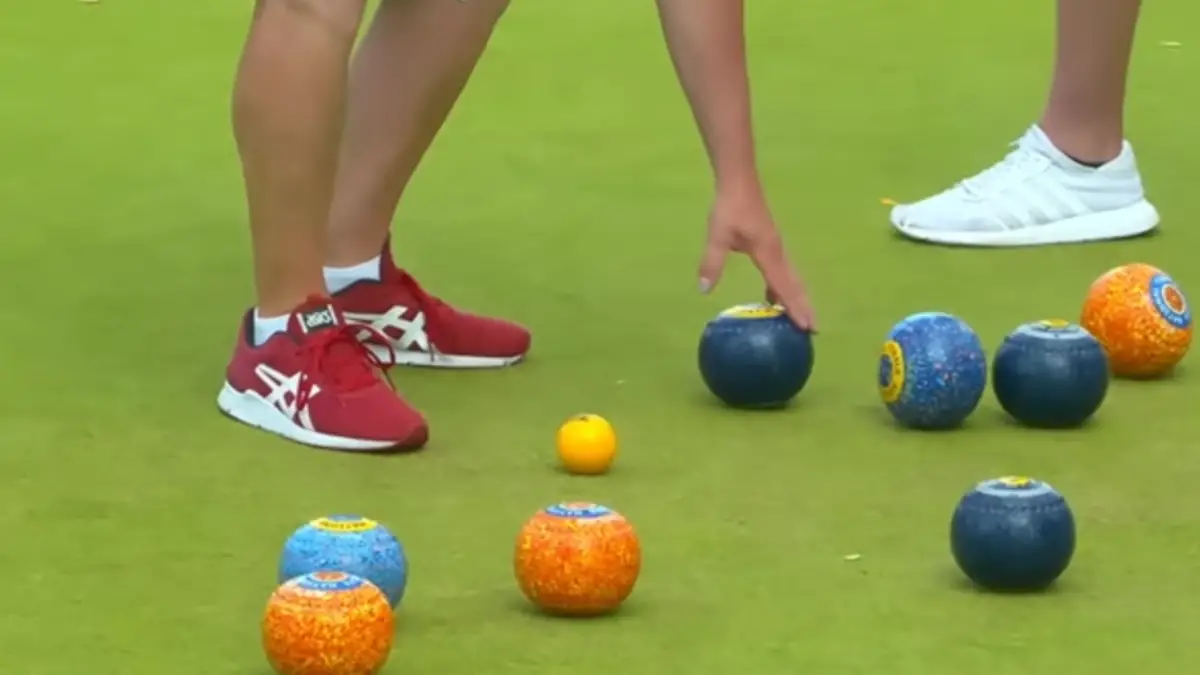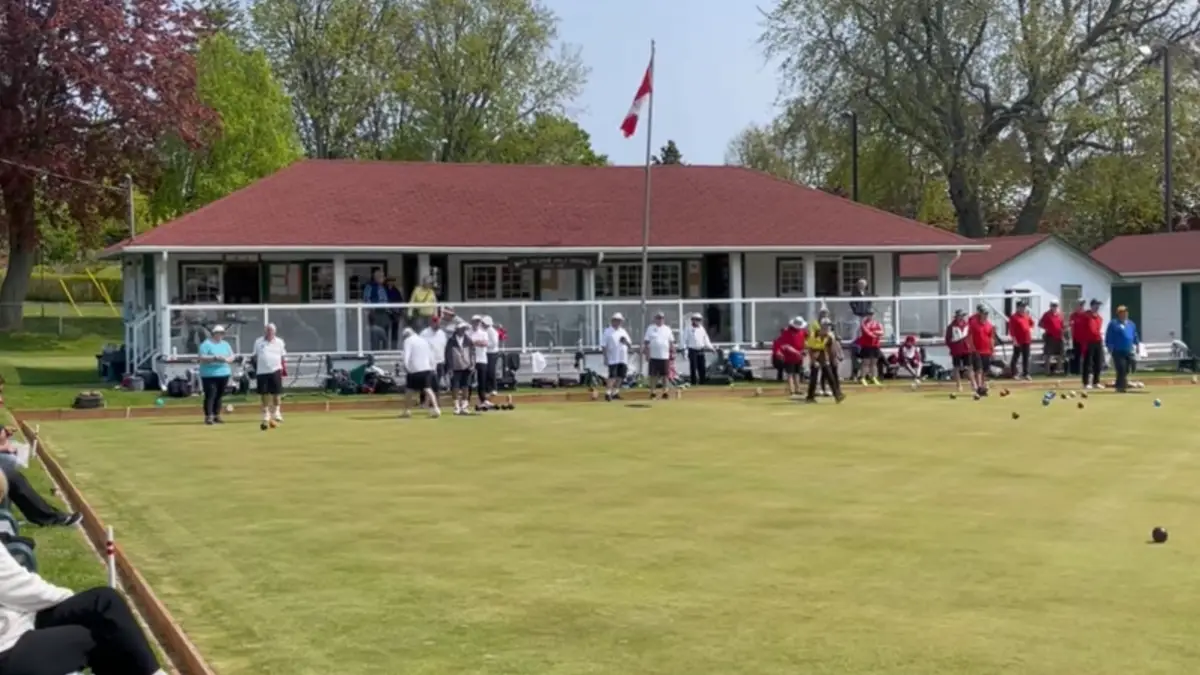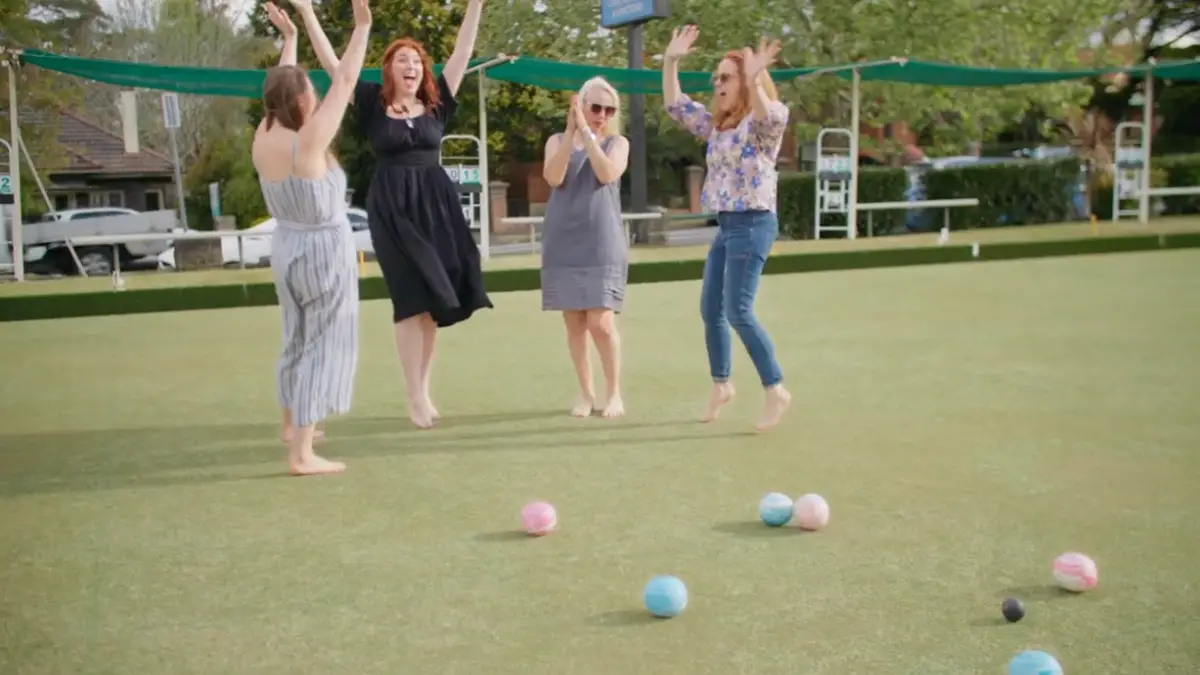Are there certain conditions under which you do not have to measure the distance between the jack and the bowls to establish which team or player is lying the shot?
Under the following conditions you do not have to measure:
Conditions under which you not have to measure for shot
- A social game if the skips decide it’s not necessary
- At clubs where the tradition is not to measure for shot
- When the skips/players decide at any time during a game that a measure is not necessary for that particular head. Usually a player will simply take out the shots (as in the image above) to indicate the shots
When is measuring for shot not allowed?
No measuring for shot is allowed during the playing of an end in a game of lawn bowls EXCEPT when all the bowls have been bowled. Before that the players will have to rely on the opinion of fellow players (or a marker) as to whether a shot or shots are lying.
What World Bowls says about measuring
The Crystal Mark Laws of Bowls says the following about measuring:
Section 1.6 – Result of an end
22 The shot
22.1 A shot or shots refers to the bowl or bowls (called shot bowls) which is or are
nearer to the jack than the nearest bowl played by the opposing team or opponent
in Singles.
22.2 No bowl must be moved until the opponents have agreed whether it is a shot or
not, except where a bowl has to be moved so that another bowl can be measured.
22.3 As the shots are agreed, each shot bowl can be removed from the head.
22.4 Shot bowls can be placed in a group where they will not interfere with measuring.
22.5 If shot bowls have been placed in a group, the number of bowls in the group must
be agreed by the opponents.
22.6 The skips or the marker where appropriate must be told (or have signalled to
them) the number of shots scored in each end.
23 Deciding the number of shots scored
23.1 The process of deciding the number of shots scored must not start until the last
bowl required to be played in an end has come to rest, or 30 seconds after that if
either skip or opponent in Singles asks for this 30-second period (for example, to
see whether or not a bowl lying at an angle will fall of its own accord within that
time).
23.2 If either skip or opponent in Singles has asked for a 30-second period, no bowl
which is likely to fall must be secured during that period.
23.3 No measuring (that is, the use of equipment, such as that described in law 54,
placed between the jack and bowls to decide which bowls are shot) will be
allowed before the process of deciding the number of shots scored starts (as
described in law 23.1). If a player measures before the process of deciding the
number of shots scored starts, the defaulting team will lose the right to play any
bowls remaining to be played in that end and the non-defaulting team will deliver
their remaining bowls to complete the end.
23.4 All measurements must be made between the nearest points of the jack and the
bowl.
23.5 When measuring between a jack in the ditch and a bowl on the green or a jack on
the green and a bowl in the ditch, the measurement must be carried out using a
flexible or string measure whenever possible.
23.6 At any time during the process of deciding the number of shots scored:
23.6.1 if a bowl is likely to fall, either opponent can use the best available means
to secure it in its position;
23.6.2 if a bowl needs to be measured and it is currently resting on another bowl
which is interfering with the measurement in any way, any player must
use the best available means to secure the resting bowl in its position and
then remove the other bowl;
23.6.3 if a bowl falls of its own accord, it must be left in its new position while
deciding the number of shots scored continues, and all the shots agreed
before the bowl fell will count;
23.6.4 if a bowl is displaced by the equipment being used during measuring, law
37.4 will apply; and
23.6.5 if the jack is displaced by the equipment being used during measuring, law
38.4 will apply.
24 No shot scored – tied end
24.1 There will be no shot scored by either team if it is agreed that:
24.1.1 the nearest bowl of each team is touching the jack;
24.1.2 the nearest bowl of each team is the same distance from the jack; or
24.1.3 no live bowls are left within the boundaries of the rink of play.
24.2 The end must be declared tied and recorded on the score card as a completed end.
24.3 Following a tied end, law 5.4 will apply.
24.4 If, however, the first end is a tied end, the first to play in that end must also play
first in the second end.
25 Delivering the final bowl of an end
It is not compulsory for the last player to play in any end to deliver the final bowl of the
end, but the player must tell the opposing skip or opponent in Singles of the decision not
to deliver the final bowl before the process of deciding the number of shots scored starts
(as described in law 23.1). This decision is final.





